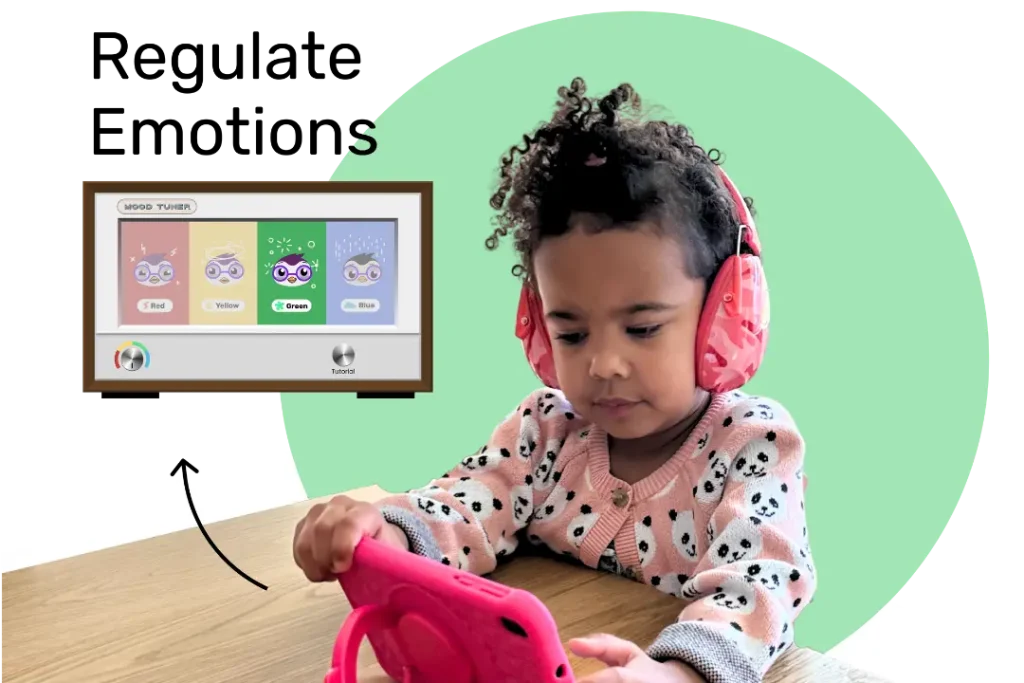Ever felt like your kid is living behind a veil, seemingly detached from emotions? You’re not alone. Many parents grapple with understanding their child’s emotional world, especially when their kids exhibit signs of emotional detachment. Fortunately, an emotional detachment disorder test can illuminate your concerns. This post will guide you through understanding emotional detachment disorder and how to identify it in your kids. And, yes, we’ve got a quiz for you to take towards the end of this post.
Table of Contents
Understanding Emotional Detachment Disorder
Emotional detachment disorder, often linked with conditions such as ADHD and autism, is characterized by a lack of emotional connection or empathy towards others. Kids with special needs may struggle to form emotional bonds and appear indifferent or aloof. However, it’s crucial to remember that every child is unique, and these behaviors do not automatically indicate an emotional detachment disorder.
Common Signs of Emotional Detachment
For instance, neurodivergent kids with emotional detachment might exhibit various behaviors. These may include difficulty expressing emotions, seeming unresponsive or indifferent to others’ feelings, and avoiding emotional situations. While these signs can be worrying, remember that they’re also opportunities for understanding and intervention.
Causes of Emotional Detachment
Most importantly, it’s essential to understand the causes of emotional detachment. It can stem from various factors such as genetics, environmental influences, or traumatic experiences. However, research is ongoing, and establishing a definitive cause in each case can be challenging.

Read more: What Is Emotional Attachment in Kids?
Spotting Emotional Detachment: A Step-by-Step Guide
So, you suspect your child might be emotionally detached. How can you be sure? Here are some steps you could take:
- Observe: Pay attention to your child’s interactions with others. Are they showing empathy or emotional responses?
- Compare: Does your child’s emotional behavior significantly differ from their peers?
- Consult: Seek a professional opinion. Medical and psychological professionals can provide a valid emotional detachment disorder test.
Emotional Detachment Disorder Test: What to Expect
When it comes to an emotional detachment disorder test, it usually involves a series of observations and assessments carried out by a mental health professional. They’ll evaluate your child’s behavior, emotional responses, and social interactions. But remember, a test doesn’t define your child; it’s merely a tool to better understand them.
Strategies for Managing Emotional Detachment Disorder
Each child is unique, hence the approach to managing emotional detachment disorder will inevitably vary. Patience, understanding, and professional help are key.
- Seek professional help: Therapists or psychologists specialized in child behavior can offer valuable insights and coping strategies.
- Be patient and understanding: Accept your child’s feelings and emotions as they are, fostering a positive, accepting environment.
- Create a safe environment: Ensure your home is a safe space where your child can freely express feelings without fear of judgment.
- Utilize supportive tools: Consider tools like Goally’s Skill Building Tablet, specifically crafted to assist kids with thinking and learning differences.
Read more: 5 Emotion Regulation Strategies for Kids
Goally | Kid’s Tablet for Building Emotional Regulation Skills
Is your child struggling with understanding and managing their emotions? Goally teaches emotional regulation skills in a fun and interactive way!

The Mood Tuner app encourages kids to look inwards and identify their feelings, helping them understand what’s going on inside. Once they’ve recognized their emotions, they can choose from a variety of exercises designed to help them self-regulate and find their balance.
To Sum Up
Addressing emotional detachment in kids can be complex. However, understanding the disorder, recognizing its signs, and getting a professional emotional detachment disorder test are significant first steps. Above all, remember that every child is unique and capable of growth.
Ultimately, it’s all about understanding and supporting your kids. And sometimes, a little help doesn’t hurt. Goally’s Skill Building Tablet is designed specifically to aid parents like you in supporting children with thinking and learning differences. It fosters skill development and empowers your child to be their best selves. Because every kid deserves to shine.

Hennah is an experienced writer and researcher, helping children with autism, ADHD, and other neurodivergent conditions. As a blog contributor for Goally, she combines her deep understanding of neurodiversity with practical advice, offering valuable insights to parents and educators.





